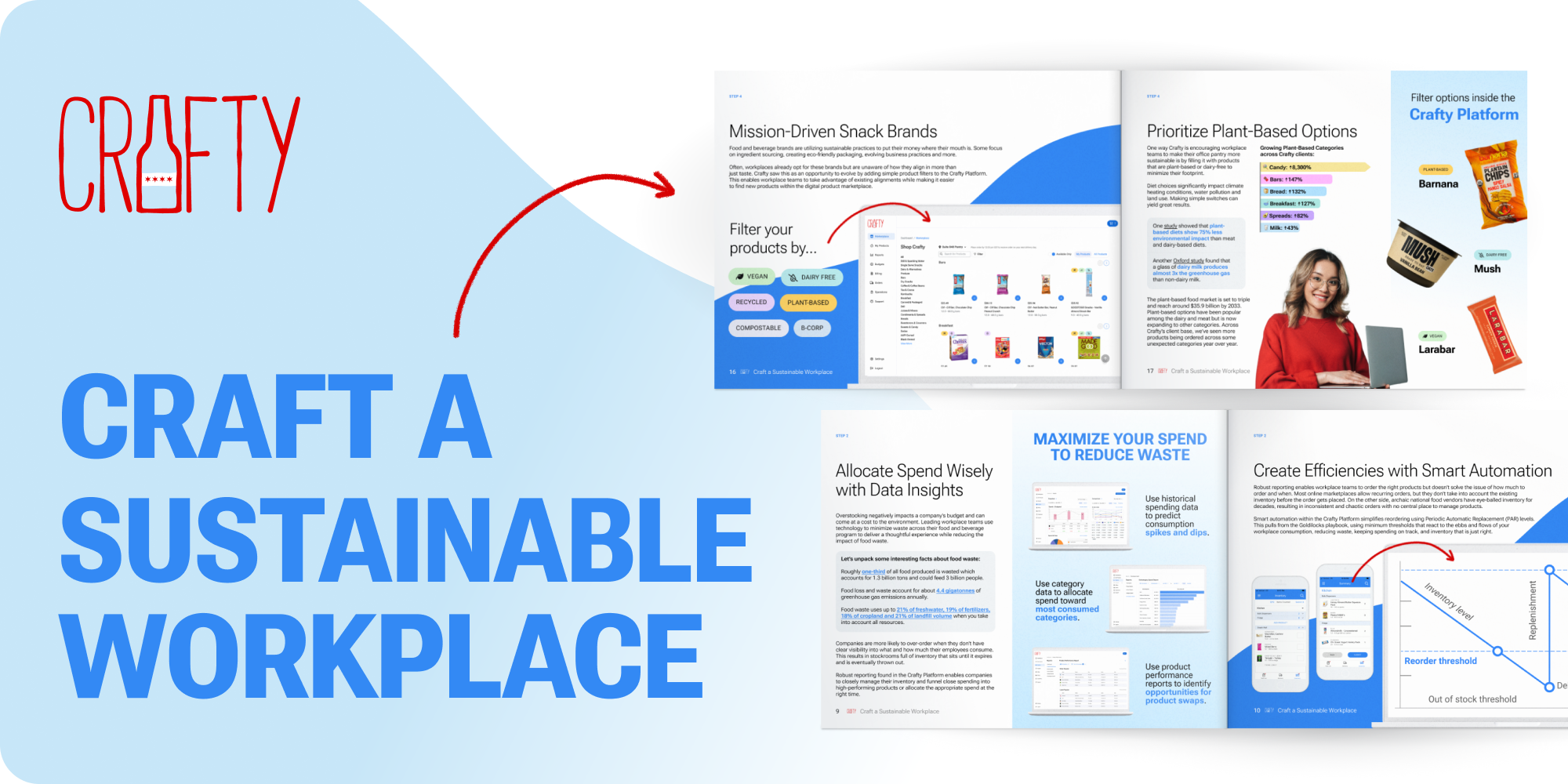Cost of Returning to The Office [Infographic]
These days it’s hard to escape from the return-to-office mandate news, whether you’re watching it unfold on TV or seeing the reactions on social media. In 2023, employee engagement is at the top of every company’s mind, with a hyperfocus on acquiring and retaining talent. A return-to-office mandate could throw a wrench in those plans, which makes it crucial to understand how your office can bring value to your employees’ lives so they want to come in.
To understand where you want to go, you first need to know where you’re at. Let’s be honest, your employees expect incentives to drive them back into the office. The pandemic forced us all to get flexible about how and where we work. As the world closed down and we all retreated into our homes, we had to learn new technologies and processes to continue meeting deadlines, hitting goals, and launching projects when we couldn’t be in the same physical place as our colleagues and managers.
In fact, remote work was uncommon before the coronavirus outbreak, with just 17% of workers logging their hours from a home office. In comparison, in the years since, that number grew to 44%, and even now that quarantines and lockdowns are over, remote telework, as it is sometimes known, or working from home (WFH) remains very popular. Attitudes towards WFH vary between employees and employers, with 65% of workers saying they want to continue remote work full time while 72% of managers in the US would like their team to be back in the office.
Although many people adapted well to remote work, for others, it led to feelings of loneliness and isolation. Business owners and managers, in particular, may have found it difficult to motivate and inspire teams offsite or to develop a dynamic workplace culture while everyone was at home. There were other challenges, including training staff to use new technologies, the frustrations of video calls, and the fear that your Slack message may not be received well unless you add a million exclamation points and emojis. 😅😍🧐😜🤪🥳
For both employees and employers, making the move back to in-person work comes down to a question of cost. Working from home incurs some expenses, such as an increase in home utilities, internet service, an investment in home office supplies, and perhaps higher food costs if snacks or lunch were previously provided at the office. There are also savings to be had, most notably in the cost of commuting, childcare, and clothing.
These questions of working from home or returning to the office come at a tumultuous economic period. Rising interest rates and the cost-of-living crisis are causing money worries for everyone, including those on high incomes. According to a study from PYMNTS and LendingClub even workers making a $100,000 salary are living paycheck to paycheck. In fact, a third of Americans feel they would have to earn $150,000 or more to live comfortably. That’s why every penny counts and careful calculations are needed to work out the cost of work today.
To encourage workers back to the office, businesses need to address these valid economic concerns as well as provide incentives that attract new top talent and reengage their existing teams. An office kitchen and pantry can save your employees over $1,750/year, and other perks like corporate catering for lunch and employee events from happy can make that number go up.
Let’s dive into the daily life of your employee so you can make data-driven decisions to find the right employee retention strategy to turn those frowns upside down when it comes to returning to the office.

Returning to the office in 2023 isn’t going to be cheap. Employers need to take into account the employee journey to get to the office including their commute, rising food costs, daycare or pet care, and your much-needed cup of coffee. Here we break down the average daily costs of returning to the office:
Outfits
Team members who attended lots of video conferencing meetings from home may still have needed to spend money on clothes and make-up to look presentable on screen, but for many remote workers, less in-person face time with colleagues meant they could save money in this area.
Those returning to the office may need to budget for some new attire; unfortunately, prices are currently higher than ever. The US Bureau of Labor Statistics reports that the cost of a man’s suit, for example, has risen in price by 14.5% in the last few years. Even if your office is casual, according to McKinsey there is a 30-40% increase in the price of cotton and cashmere, which will impact all clothing prices.
Financial experts suggest you spend around 5% of your take-home pay on your wardrobe, so do the math to work out your personal clothing budget. At the average US wage of just over $72,000 yearly, workers can expect a take-home pay of $4,632 monthly. Based on this logic, employees have around $12.60 daily clothing budget.
Daily Clothing Cost: $12.60 per day
Beauty Products
Can’t go into the office without makeup? You’re not alone. NPD reported that in 2018 63.9% of U.S. women use makeup daily, but that rate did significantly drop after the pandemic. That said, spending in the beauty industry didn’t go away – it transitioned to skincare.
Statista reports that 43% of the beauty industry is skincare-focused products estimated to bring in over $177 billion by 2025. Plus this doesn’t even take into account beauty services such as facials, hair upkeep, and more.
For those who choose to wear makeup, the cost of keeping up appearances can be a massive $1,000 per year. When you break that down, that gives you an average daily cost of $2.73.
Daily Beauty Cost: $2.75 per day
Childcare
If you ask any working parent what their largest expense is outside of their rent or mortgage, it’s likely to be childcare. According to a poll done by NPR, 51% of the 1,200+ respondents said that childcare costs presented a somewhat serious problem while 20% said it was a serious problem.
During the pandemic, parents found it difficult to manage both their work and childcare responsibilities. However, the change of pace did provide them with more flexibility with their schedules while some opted to keep their kids completely at home to save some money.
Returning to the office makes it essential for parents to organize childcare, whether daycare, afterschool care, or in-home assistance. The amount of children per household, ages of the children, and care needs all have to be factored in. For example, the average cost of daycare for an infant is a staggering $1,300 per month. In cities like Chicago, daycare costs can be as high as $2,500 per month.
Daily Daycare Cost: $60 per day
Petcare
Of course, pet parents are parents too! During the pandemic, pets got used to the sweet life of their humans being around all the time, and having them go back to the office could be a shock to the system. Except for cats, they would like some alone time.
If it’s important to your employees for their pets to get some steps in while they are at work, then that is another expense to add to the list. Pet sitters or dog walkers charge an average of $22.50 per walk.
Daily Petcare Cost: $22.50 per walk
Commuting
One of the biggest savings remote workers experienced was in ditching the commute to work. Gas, public transportation, or Uber all come at a hefty price.
However, they are only part of the picture. A long commute may also lead workers to purchase more magazines, books, or use their mobile data plan more often to pass the time on their train or bus ride. If you drive, the extra mileage comes with wear and tear to your vehicle.
Commuters also tend to spend more money in stores on their way to work or on food for their journey. The average cost of commuting is $8,466 per year and may include gas and vehicle maintenance. If your employee’s are in an area with public transportation like New York City for example, fares can be anywhere around $2.75 each way.
Daily Driving Cost: $32.56 per day
Daily Train Cost: $5.00+ per day
Coffee
Coffee made at home is considerably cheaper than the expensive cafe versions of your favorite lattes or cappuccinos, especially as the average cup of coffee now costs anywhere from $2-$5. Depending on how many times you need a java boost and how fancy your chosen coffee is it could run up an annual cost of $730+. Even those who brew their own coffee at home could find the daily price prohibitive, spending around $1.24 per day on coffee.
Employers can make returning to the office more appealing to their staff by providing high-quality office coffee in their workplace kitchens. It’s a perk that workers will really appreciate, especially as it saves them money. When workers stop to grab a cup of coffee, they can mingle with other staff, take a break and socialize, all of which can positively impact employee performance. Research also shows short breaks can help alleviate stress and fatigue in employees.
Daily Coffee Cost: $1.24 - $5.00 per day
Breakfast
They say breakfast is the most important meal of the day, but who knew it could be so expensive? Returning to the office means you will probably grab breakfast on the go, costing you between $6-$15 daily.
Research shows that breakfast eaters not only kickstart their day with more energy, but they are also more likely to pay attention to their overall nutrition and feel less stressed overall. To piggyback off of that, 2023 reports from Gallup say that the two most important things attracting US talent to new opportunities are a company’s interest in personal well-being and improvement in benefits package and pay.
Breakfast may be your path forward to both improving your team’s well-being and benefits, while also giving them the nutrition needed to jumpstart their day. You can do this by providing easy and healthy breakfast varieties in the office kitchen or doing regular office catering for breakfast. Either way, you will be creating a healthier workforce, allowing your employees’ salary to travel farther, and providing a valuable benefit that lures in top talent.
Daily Breakfast Cost: $6.00 - $15.00 per day
Lunch
Although bag lunches made at home are an option, eating out during the workday can be pricy. A so-called “lunchflation” has seen prices soar for lunches across the country with food costs outside the home increasing by 7.2% over the last year.
Office kitchens that provide quick meals or those with corporate catering programs that offer lunch daily or weekly can help employees offset that cost. At Crafty HQ, Tuesdays are when the majority of employees show up to the office. Why? Tuesdays is when Crafty caters lunch for the entire team. Plot twist: free food still works.
Daily Lunch Cost: $15 per day
Office Drinks
According to a study conducted by OnePoll, workers rate free beverages as their most desired perk to return to the office. Whether companies have a fridge stocked with all their employees’ favorites or beverage machines such as the Bevi or the Coke Freestyle, businesses could raise employee motivation and satisfaction with minimal investment.
Staying hydrated at the office is important for optimum health and performance but those extra beverages don’t come cheap, especially with the cost of soda rising 45% in less than four years. In addition to that, companies often overspend on unpopular beverages that end up sitting in the stockroom for years.
The experts at Crafty solve that problem by giving companies access to consumption data, making it easily track their team’s favorites alongside the budget. These insights give the team’s on the ground the ability to reallocate those dollars into the products employees love resulting in a better employee experience.
Daily Beverage Cost: $2.00 - $6.00 per day
Office Snacks
Free snacks at work have been linked to greater employee satisfaction and happiness. It’s no wonder when you consider the price of snacks costs the average American almost $500 per year.
Crafty typically gets brought in to streamline an office snack program. Many offices run their food and beverage programs where they have no idea what was ordered, what was liked, and what was wasted across multiple offices. In the meantime, each office accumulates so many receipts that reporting and reconciling finances makes it impossible to forecast budgets.
Companies find that consolidating their program with Crafty increases their team’s productivity without having to sacrifice visibility into daily operations and reporting. Crafty operators completely manage the office food service program while providing detailed reporting in one central platform. Companies can see what’s happening on the ground companywide while having an easy place to track consumption data and budget spending.
Daily Snack Cost: $1.84 per day
Daily Cost To Return To The Office
These combined costs exceed well over $100 per day, which represents substantial expenses to your employees. Even without the astronomical cost of daycare, most workers returning to the office will have to shell out at least $50 a day more than when they work from home.
That said, remote work is not the best solution for every workplace, every team, or every individual. Many remote workers complain of social isolation which can lead to serious health impacts, including anxiety and depression. One study among remote workers showed their top complaints were loneliness, a lack of collaboration, and difficulties communicating with their colleagues. In addition, working from home makes it almost impossible to maintain workplace friendships, a serious implication as 70% of workers say having friendships at work is the most important element of a happy work life.
The big question is: How can your office perks offset these costs? Employee benefits like healthcare, retirement planning, etc. are very important but they don’t offset these day-to-day costs your employees accrue just by living. Even working at home, employees are still incurring these costs and salaries are not enough.
Elevating the office experience is an opportunity to both improve the lives of your employees but also make their money travel further. Crafty is the secret ingredient to make your team's return to the office feel as smooth as possible. Welcome your team back with a stocked office kitchen and pantry, a coffee station, and organized corporate catering each week. You’ll not only help them save money, but you’ll also boost employee engagement and satisfaction making the office seem more attractive than ever.
🚨 NEW REPORT
CRAFT A SUSTAINABLE WORKPLACE
Explore the five practices leading workplaces use to build sustainable office pantry programs.
Ready to craft a better workplace?
Learn how we’re helping our clients streamline operations, make data-driven decisions, and elevate their culture through food and beverage at the office (and beyond).



